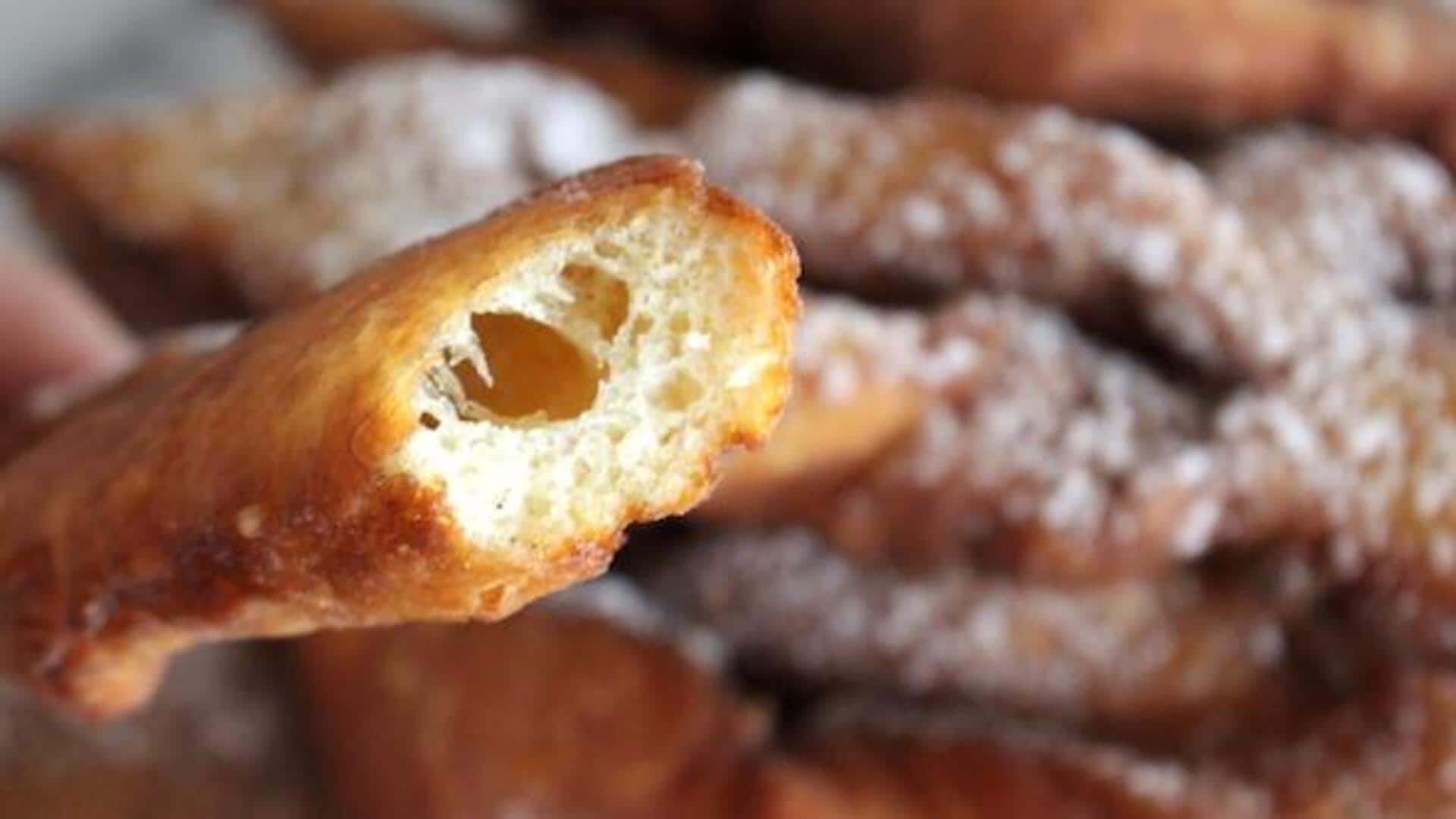
Vegan Icelandic kleina fry delight guide
What's the story
Kleina is a traditional Icelandic pastry, deeply rooted in the country's culinary history. This twisted, fried dough treat is often enjoyed with coffee and has been a staple in Icelandic culture for centuries. Traditionally made with dairy and eggs, our version is vegan-friendly, ensuring everyone can enjoy this delightful snack. Let's get cooking and bring a taste of Iceland into your kitchen.
Ingredients list
Gather the following ingredients
To make vegan kleina, you need two cups of all-purpose flour, 1/2 cup of sugar, 1/2 teaspoon of baking powder, 1/4 teaspoon of nutmeg, 1/4 teaspoon of cardamom, 1/2 cup of plant-based milk (almond or soy), and 1/4 cup of melted coconut oil. Also, prepare oil for frying. These ingredients create the dough and the unique flavors characteristic of kleina.
Step 1
Prepare the dough
Start by whisking together the all-purpose flour, sugar, baking powder, nutmeg, and cardamom in a large mixing bowl. Ensure these dry ingredients are well combined to distribute the flavors evenly throughout your kleina. In another bowl, mix the plant-based milk with melted coconut oil. Gradually add this wet mixture to your dry ingredients while stirring continuously until a soft dough forms.
Step 2
Shape your Kleinur
After the dough has rested for 10 minutes to become more elastic, roll it out on a floured surface to about half an inch thick. Cut it into strips that are two inches wide and five inches long. Make a small slit in the center of each strip. Then, carefully pull one end through this slit to form the traditional knot-like shape of kleina.
Step 3
Fry to perfection
Heat oil in a deep fryer or large pot to about 375 degrees Fahrenheit (190 degrees Celsius). Carefully place several shaped Kleinur into the hot oil without overcrowding them. Fry them until they're golden brown on both sides; this usually takes about two minutes per side. Use tongs or a slotted spoon to remove them from the oil and drain on paper towels.
Step 4
Serve warmly
Serve your vegan Icelandic kleinur warm or at room temperature, as they are best fresh. They can be dusted with powdered sugar or served plain with coffee or tea. This vegan version of an Icelandic classic lets everyone enjoy a piece of culinary history. It shows that cultural delicacies can be inclusive while maintaining authenticity and flavor.